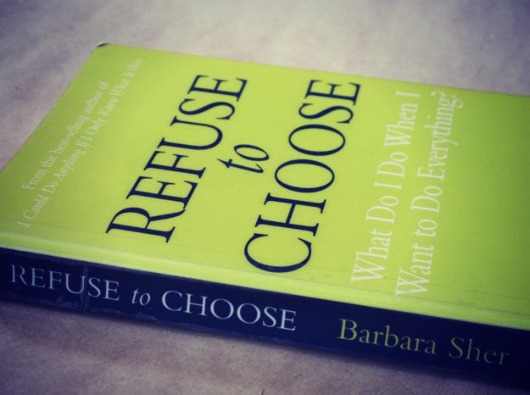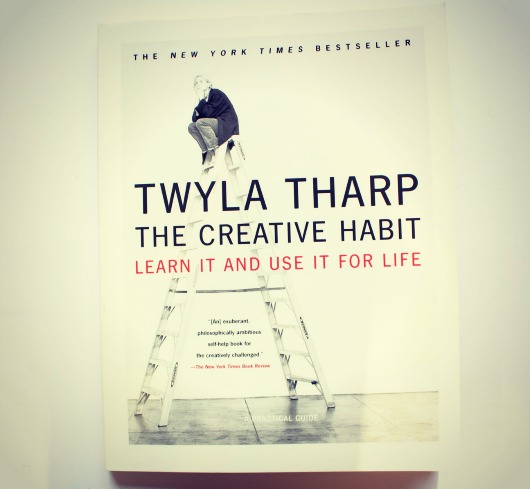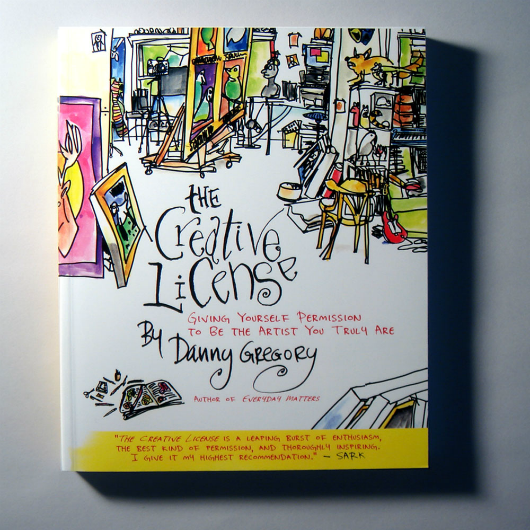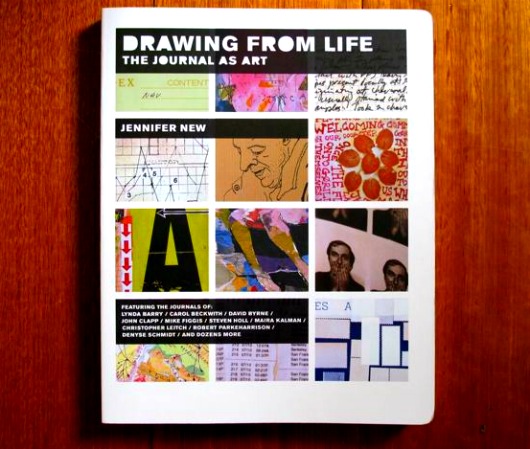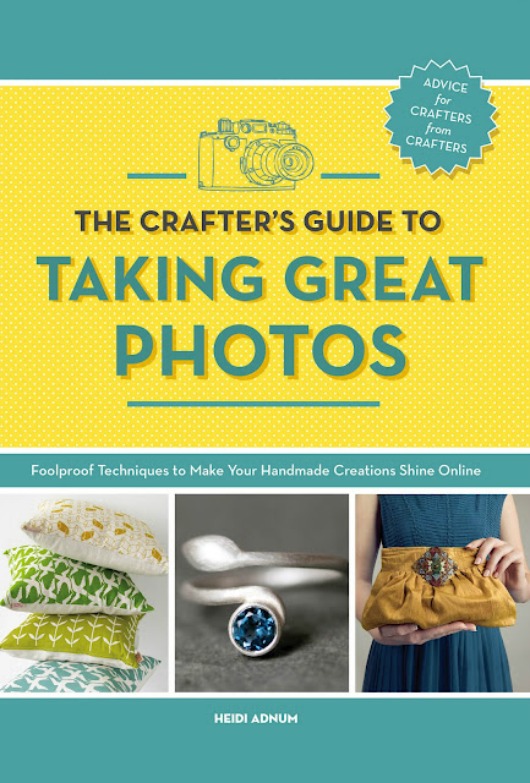Book Review: Refuse to Choose by Barbara Sher
If you've ever had trouble choosing between projects or find yourself coming up with more ideas than you can possibly see through, Refuse to Choose may come as a revelation to you. This book is for people who feel as though they have to choose just one interest to pursue and leave behind their dozens of other tantalising hobbies or business ideas.
This book is touted as 'the revolutionary programme for doing all that you love,' and as someone who's always been interested in many different things I was intrigued by what it might have to say.
The good news is Refuse to Choose makes you feel okay about your diverse and sometimes seemingly unrelated interests and wholeheartedly encourages you to pursue them. It also tells you how.
Author, Barbara Sher, starts by defining the 'Scanner' personality type. 'Scanners love to read and write, to fix and invent things, to design projects and businesses, to cook and sing, and to create the perfect dinner party,' naming just a few of the interests that might be held by a single person. She goes on: 'To Scanners the world is like a big candy store full of fascinating opportunities, and all they want is to reach out and stuff their pockets…the problem is, Scanners are starving in the candy store'. Sher goes on to explain that Scanners often believe they must make a choice and can only pursue one path. As a result, many people don't choose anything at all and feel frustrated and unfulfilled.
The great thing about this book is that it's practical and Sher offers many useful tools. She describes a 'Scanner's Daybook' in which you record your ideas, no matter how fanciful, and explore them to their limit in writing. A binder system, in which a folder is kept for each project, is suggested as a way to keep order and avoid losing great ideas or material.
Sher outlines suitable careers for Scanners - too many to mention here - but she discusses in detail different ways to design your life by rethinking your 'career' path. Perhaps easily replaceable jobs suit your plans or highly paid-short term work which pays for long stretches of available time through the year would work for you.
I was really excited reading this book and found myself implementing many of the ideas and re-thinking my own approach to how I use my time.
Sher insists that it's okay to abandon projects half-finished and move on to the next exciting thing. That's just what Scanners do. But she does say that at some point, 'You need to throw yourself heart and soul into something you love and give it your very best effort. You need to push past your boredom barriers and take at least one of your passions to the absolute limit you're capable of…Hold nothing back'.
An inspirational read for anyone trying to work out just how they're going to get to do everything they love.
Refuse to Choose: What Do I Do When I Want to Do Everything? by Barbara Sher is published by Rodale Books. Unfortunately it appears to be out of print but you could track down a second-hand copy online or do what I did and borrow it from your lovely local library.
Barbara Sher is also the author of many other titles on goal achievement. Visit her website for more information.
Jodi Wiley is an artist, writer, teacher and blogger. She has written freelance articles and book reviews for magazines and newspapers, as well as education curriculum. She has won awards for her artwork and been a finalist for several art and illustration prizes. Visit Jodi's blog: artbywiley.com
Book Review: Graphic Design Thinking by Ellen Lupton (ed)
by Jodi Wiley
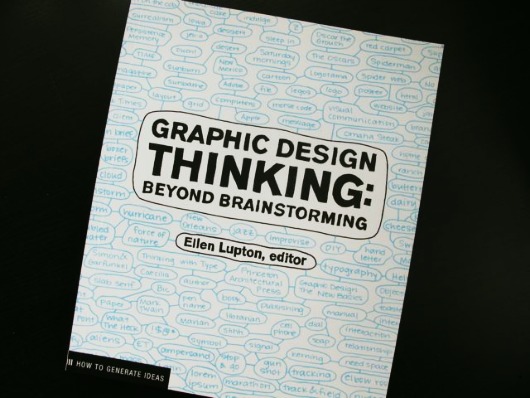 Everyone's heard of brainstorming but it's not the only way to come up with new ideas. Graphic Design Thinking: Beyond Brainstorming provides enough thinking techniques to break out of even the worst creative rut.
Everyone's heard of brainstorming but it's not the only way to come up with new ideas. Graphic Design Thinking: Beyond Brainstorming provides enough thinking techniques to break out of even the worst creative rut.
The book is an overview of the design process in three parts: defining problems, getting ideas and creating form. Each section goes through the sequence of explaining a concept (such as 'visual research'), providing case studies and finally, giving the reader step-by-step instructions for how to carry out the technique. Many of the thinking tools (brainstorming, of course, and mind mapping) will be familiar to people in a wide variety of fields including design, business and education, to name only a few. But the section 'How to Get Ideas' proved particularly illuminating for me, and is packed full of activities for collaboration and individual processes.
The techniques covered might be elementary stuff for the professional graphic designer but some of the ideas could also be a revelation for those seeking fresh inspiration. For example, the section titled 'Regurgitation' advises to go for a walk with a plastic bag, a camera and sketchbook to collect printed ephemera for later study, documentation and transformation; 'Unconventional Tools' describes tracing with toilet paper; and 'Take the Matter Outside' suggests using the natural environment as inspiration for designing new patterns, textures and sequences.
One thing I realised as I was reading this book is that almost all of the techniques for generating design ideas can be applied in other contexts. I'm not a graphic designer but this book had me brimming with ideas about the ways I could use some of these prompts as a teacher, writer and artist.
Graphic Design Thinking was authored, edited and designed by students and faculty in a Graphic Design MFA program and as such, it does have a textbook feel to it - both in form and content. But this also makes it a great book to dip into rather than read from cover-to-cover (although you could definitely do that too, as I did). It's a perfect resource for the early-career graphic designer but could also provide inspiration for those more established in the field. People engaged in other creative pursuits may also benefit from the thinking techniques and activities provided.
Graphic Design Thinking: Beyond Brainstorming is published by Princeton Architectural Press.
Jodi Wiley is an artist, writer, teacher and blogger. She has written freelance articles and book reviews for magazines and newspapers, as well as education curriculum. She has won awards for her artwork and been a finalist for several art and illustration prizes. Jodi is currently on maternity leave from high school teaching and is on a (quite frankly deranged) quest to update her blog daily: artbywiley.com
Book Review: The Creative Habit by Twyla Tharp
Twyla Tharp is a renowned American choreographer who has created more than one hundred dances for her own company as well as prestigious dance and ballet companies worldwide. She’s had a long, successful career, won many awards and obviously knows her stuff in the field of dance. But she also knows a thing or two about creativity. This book is not about dance, although Tharp does use many personal examples from her own life’s work. The Creative Habit: learn it and use it for life is about creativity in every field and Tharp draws her examples not only from the performing arts but she also references visual arts, writing, composing and even business.
It took me a while to read this book because I wasn’t sure, at first, exactly how to interpret it. It’s not a conventional ‘self-help’ or ‘how to’ book. It takes a more philosophical approach and the exercises at the end of each chapter aren’t always directives for action but are sometimes just food for thought. The book crept up on me though and after a while I started to really enjoy Tharp’s engaging voice and understand her innovative ideas a little better. The Creative Habit has more complexity and depth than your regular self-help title and I know I will want to re-read it again someday after I’ve allowed this first reading to settle.
Tharp writes about creative ritual and harnessing memory. Her thoughts on how to research a project and ‘scratch’ around for ideas are relevant to every creative field. There is a chapter about how to get out of a rut and into a groove. One about how to avoid over-planning and the need to accept failure as an important part of the creative process.
At one point she writes about the fallacy of needing the perfect conditions in which to create. I like what she has to say about this: ‘My perfect world does not exist, but it’s there as a goal. What are the conditions of your perfect world? Which of them are essential, and which can you work around? You may discover you are not that far from heaven’.
The Creative Habit: learn it and use it for life is an inspiring read for anyone with an interest in the creative life. It’s published by Simon & Schuster Paperbacks.
Jodi Wiley is an artist, writer, teacher and blogger. She has written freelance articles and book reviews for magazines and newspapers, as well as education curriculum. She has won awards for her artwork and been a finalist for several art and illustration prizes. Jodi is currently on maternity leave from high school teaching and is on a (quite frankly deranged) quest to update her blog daily: artbywiley.com
Book Review: The Creative License by Danny Gregory
Danny Gregory is a bit of a poster boy for sketchbook journaling, having written several books about it and published thousands of his own journal pages online. He's an advocate of the idea is that everyone is an artist, and everyone is creative, whether or not you're in a so-called 'creative' profession.
I've always been interested in journaling. In the past I've kept the written kind but recently I've become more interested in the illustrated form. So this book is right up my alley.
The Creative License inspires you to pick up a pen and just draw. Gregory wants us to draw no matter what, even 'badly', as a way to access our own innate creativity. This book is full of advice such as 'celebrate your mistakes' and 'give yourself deadlines' to complete pages in your journal. Gregory wants us to draw the mundane and the commonplace and in the process see the beauty in everyday life.
By drawing daily, Gregory believes we tap into our creativity. 'I want to show you that it is possible. That you can do it. That you can draw and write and sing, and live more richly, and find and be the real you.'
The book is filled with practical instruction on drawing (although it's always in the spirit of fun and never boring, technical lessons), lists of things to draw as well as pep talks about things like procrastination or calling yourself an artist ('an artist is someone who makes art' Gregory insists).
The book's design lends itself to the lucky-dip style of reading: you can just open it at any page and be inspired by what you see and read. It's full of Gregory's own drawings from his journals and the eclectic layout means your eye is constantly drawn to new material. After spending time with this book I always go away energised and motivated to draw.
And just as an aside, if this is the kind of thing you're interested in, you may also like another book by Danny Gregory - An Illustrated Life: Drawing Inspiration from the Private Sketchbooks of Artists, Illustrators and Designers.
The Creative License is fantastic for people who love drawing or want to be inspired to draw. But even if you've never considered this form of creative outlet, after looking through this book you may begin to feel like picking up a pen and beginning.
The Creative License: Giving Yourself Permission to be the Artist You Truly Are is published by Hyperion Books.
Jodi Wiley is an artist, writer, teacher and blogger. She has written freelance articles and book reviews for magazines and newspapers, as well as education curriculum. She has won awards for her artwork and been a finalist for several art and illustration prizes. Jodi is currently on maternity leave from high school teaching and is on a (quite frankly deranged) quest to update her blog daily: artbywiley.com
Book Review: The Handmade Marketplace by Kari Chapin
This little gem of a book is a handy 'how-to' on selling your handmade creations (whatever they may be) locally, globally and online. Written by a crafter (Kari Chapin), for crafters, it's full of great advice for turning your hobby into a business.
Divided into three parts, The Handmade Marketplace covers everything from goal setting, branding and pricing in Part 1 to marketing, blogging and publicity in the second part, with the last section focusing on selling: at craft fairs, online and in bricks and mortar stores.
Sometimes the specific business advice is not relevant outside the north American market but there's still plenty in there to sink your crafty teeth into. It includes helpful tips about all aspects of creative business from using social media to building community and, of course, selling your stuff. I especially like that it's full of advice from real people who have successfully turned their passion into a thriving business. People like Ashley Goldberg, Grace Bonney and Holly Becker (and many others) have been interviewed and snippets of their wisdom appears throughout the book.
It has also been illustrated by Emily Martin (aka The Black Apple) and Jen Skelley whose drawings give it a funky indie art feel. The fun design of the book and the conversational writing style means it's a breezy and engaging read.
If you're looking for inspiration to turn your crafty pastime into a business this book will have you brimming with ideas. It's a great starting point for taking your crafty ideas to the next level.
The Handmade Marketplace is published by Storey Publishing.
Jodi Wiley is an artist, writer, teacher and blogger. She has written freelance articles and book reviews for magazines and newspapers, as well as education curriculum. She has won awards for her artwork and been a finalist for several art and illustration prizes. Jodi is currently on maternity leave from high school teaching and is on a (quite frankly deranged) quest to update her blog daily: artbywiley.com
Book Review: Drawing from Life - The Journal as Art by Jennifer New
Visual diaries are often associated with artists and written journals with writers. But, of course, many creative endeavors are aided by keeping some kind of record book.
I have kept a journal of one kind or another for most of my life so I was very excited to discover this book. Drawing from Life by Jennifer New is distinctive because it features a range of people from wildly different professions: illustrators and artists, yes, but also a psychiatrist, a geologist, a performing artist, a photographer, an engineer, a furniture designer and a quilter, among many others.
What they all have in common is their propensity to record their thinking in a book made of paper (I wonder how rare this activity is becoming given the rise of electronic organisers?). The book is divided into four sections: observation, reflection, exploration and creation depending on the way the person mainly uses their journal.
Each visual journal spread comes with a description of the particular approach its author takes, their reason for journaling, frequency of entries as well as any predilections for book types (lined or unlined paper etc).
The big draw-card of this book, though, is the voyeuristic opportunity to peek into all of these journals. There are illustrator, Maira Kalman's, observational sketches from life and artist Christopher Leitch's meticulous recording (in words and pictures) of his every dream.
Frenchwoman Sophie Binder bicycled her way around the world and her travel sketches are amazing. Cartoonist Lynda Barry writes with an Asian-style brush to slow down her thought-process and uncover more 'back-of-the-mind' images.
Designer Erica Bohanon covers her pages with drawings of chairs, tables and lamps. Quilt-maker Denyse Schmidt creates graphic diagrams of her quilt designs but also uses her journal to muse about life, paste in quotes and admonish herself for biting her fingernails.
This is what I love most about journals: the organic way in which they evolve, revealing the creation process, but also saying so much about the creator themselves.
In her introduction New says of Drawing from Life, '...while this is not intended as a how-to - most of these books are much too personal and pragmatic for replication - there are certainly many creative seeds to inspire readers'. That's for sure. I know I learn something new every time I open this collection and am inspired once again to continue journaling myself.
Drawing from Life: The Journal as Art is Published by Princeton Architectural Press
Jodi Wiley is an artist, writer, teacher and blogger. She has written freelance articles and book reviews for magazines and newspapers, as well as education curriculum. She has won awards for her artwork and been a finalist for several art and illustration prizes. Jodi is currently on maternity leave from high school teaching and is on a (quite frankly deranged) quest to update her blog daily: artbywiley.com
Book Review: The Crafter's Guide to Taking Great Photos by Heidi Adnum
By Jodi Wiley My photography skills are pretty basic and I'm still using my advanced compact on 'auto' - not that there's anything wrong with that - but I figured it was about time me and those fancy settings got better acquainted.
The Crafter's Guide to Taking Great Photos by photographer and crafter, Heidi Adnum, is full of useful information for the amateur picture taker. I use a lot of trial and error to take my own blog photos. A little less 'error' would be great though, which is where this book comes in. If you photograph your own products for your blog, website or online shop then this book is aimed squarely at you. But it's also great for people who keep a blog and just want to take lovely photos of 'things'.
But this book isn't just about getting to know your camera settings, although it definitely covers that in detail (the first chapter is 'Camera Basics' - light, aperture, shutter, exposure - the usual suspects) but it's a whole lot more than that. There's information on 'how to tell your story' which gets you thinking about how you want your products to be perceived. It shows how you can alter the 'feel' of your items using techniques such as composition, backgrounds, props and styling. There are also handy DIY tutorials on making camera accessories like a light box, flash diffuser and seamless background.
The main body of the book covers how to photograph just about every form of craft you can think of: Fashion and Fabrics, Jewellery, Art, Home Accessories and more. Each section also includes an FAQ with questions such as: 'My home accessories would look great featured in a beautiful home. Problem is, though, I live in a tiny less-than-photogenic apartment. Help!' Can anyone else identify? Each section also ends with a spotlight on a particular crafter. It's great to hear how actual people have solved their photography problems and improved over time. Really useful stuff.
The final third of the book goes through photo editing tutorials, image handling (protecting copyright, saving and storing, troubleshooting) and business advice.
This book is touted as containing 'foolproof' techniques for creating great product photos and it's certainly easy to understand. It's light on jargon and very readable. It's also jam-packed with lush photos of gorgeous products so it's easy on the eye too.
I'm loving this book right now. Combined with the tripod I just got for my birthday I should be taking top photos in no time! Now if only I can figure out those settings...
The Crafter's Guide to Taking Great Photos is published by Murdoch Books.
Jodi Wiley is an artist, writer, teacher and blogger. She has written freelance articles and book reviews for magazines and newspapers, as well as education curriculum. She has has won awards for her artwork and been a finalist for several art and illustration prizes. Jodi is currently on maternity leave from high school teaching and is on a (quite frankly deranged) quest to update her blog daily: artbywiley.com

